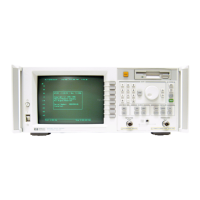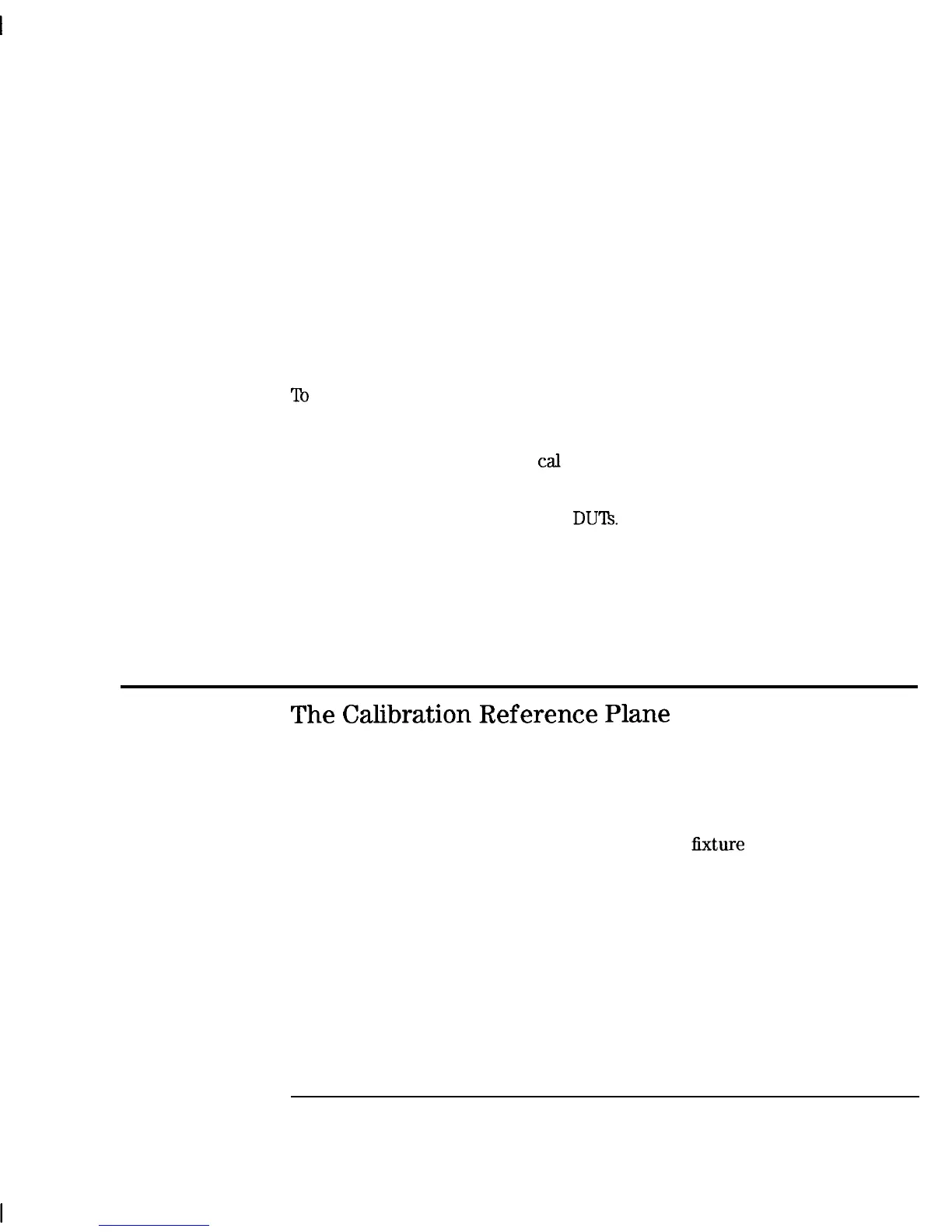I
-
I
-
Calibrating for Increased Measurement
Accuracy
Measurement Calibration Overview
calibrating. Since calibration standards are very precise, great accuracy is
achieved.
When a user-defined calibration is performed, the analyzer compares the
measurement data of known calibration standards to ideal measurement
data. The network analyzer then calculates the difference between the
measurement data and the calibration standard models to create error
correction arrays. The network analyzer uses the error correction array data
to correct subsequent measurement data.
‘Ib
perform a quality calibration:
l
Use the highest quality standards available and take care of them.
l
Be sure to select the correct
cal
kit by pressing (CAL) Cal Kit .
l
Make consistent connections (use a torque wrench with 3.5 mm connectors
if possible) of the standards and
DUTs.
l
Minimize temperature variations.
l
Minimize movement of cables.
The
Calibration
Reference
Plane
For the most accurate calibrations and measurements it is important that
you calibrate at the appropriate reference plane. The reference plane is
where you will actually be connecting your DUT. Most often you will not be
connecting your DUT directly to the analyzer’s front panel. More likely, you
will be connecting your DUT to some sort of test
lixture
that is connected to
the analyzer. See Figure 6-3. It is important to calibrate out the effects of
the test fixture and its associated cables and hardware. Whenever possible
connect your calibration standards to the calibration reference plane.
6-5
深圳市盛腾仪器仪表有限公司 Tel:0755-83589391 Fax:0755-83539691 Website: www.Sengt.com

